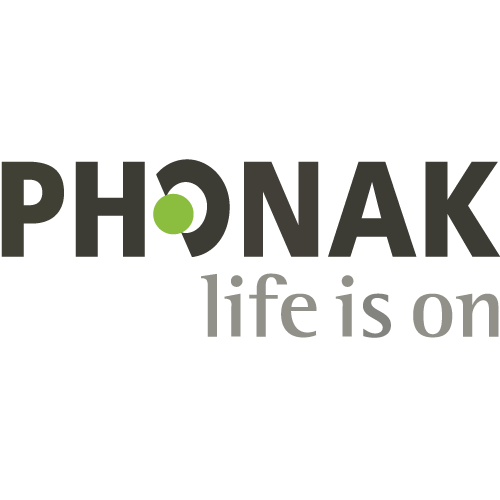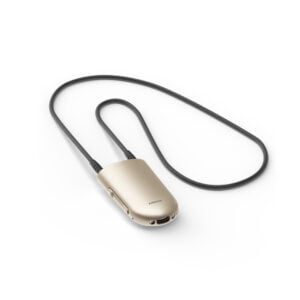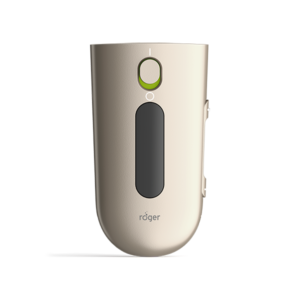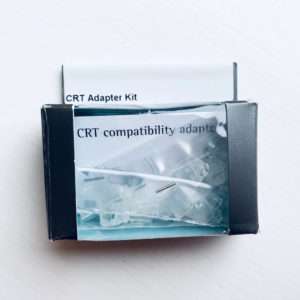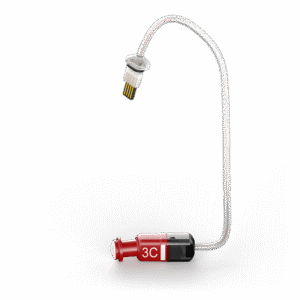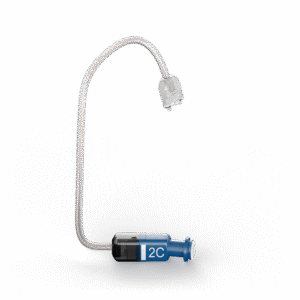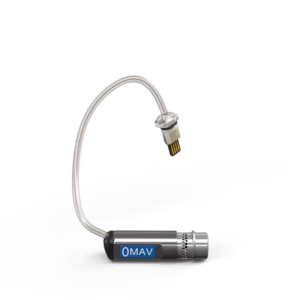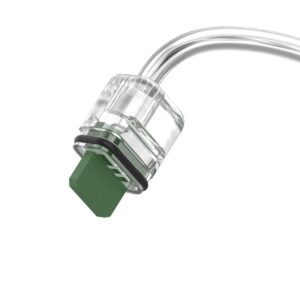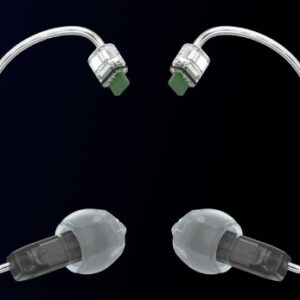Hearing Aid Receivers
Has your hearing aid suddenly gone quiet? A dead hearing aid receiver might be the culprit. Fortunately, Hearing Aid Accessories is here to help you get back to clear, reliable sound. We stock a wide range of receivers from all major brands, including Phonak, GN ReSound, Widex, and Oticon. No matter your hearing aid model, we have the right receiver to keep your hearing aid performing at its best.
-
Phonak Roger Neckloop 02 – Wireless Receive…
- £74.99 Inc. VAT
- Struggling to hear clearly in noisy places or from a distance? The Phonak Roger Neckloop 02, when paired with a Roger microphone, streams speech directly to your hearing aids or cochlear implants—making conversations effortless again. Brand: Phonak Includes: Phonak Roger Neckloop 02, USB Charging Cable, User Manual & Quick Start Guide, Neckloop (Standard size)
- Add to basket
-
Phonak CRT 2 Pin Receiver Adapter Kit…
- £18.49 Inc. VAT
- These convenient Phonak adapters allow you to connect Phonak 2-Pin receivers with older hearing aid models. Brand: Phonak Compatibility: compatible with Audéo and Audéo Yes hearing aids
- Add to basket
-
Phonak CROS Tube/Receivers – 5.0 & …
- £9.49 – £12.99Price range: £9.49 through £12.99 Inc. VAT
- Experience clear, effortless hearing even with single-sided deafness using the Phonak CROS Receivers. Designed for individuals with unaidable hearing in one ear, this lightweight and discreet device wirelessly transmits sound from your poorer-hearing side to a compatible Phonak hearing aid on your better-hearing side—restoring balance and spatial awareness in daily listening environments. Brand: Phonak Includes : 1x Phonak CROS receiver…
- Select options This product has multiple variants. The options may be chosen on the product page
-
Phonak MAV Receiver 6.0 – ActiveVent Techno…
- £59.99 Inc. VAT
- Experience unparalleled sound quality with Phonak MAV Receiver 6.0 Receivers designed for Audéo Infinio & Sphere rechargeable hearing aids. Brand: Phonak Includes: 1x ActiveVent Receiver in the selected size (0, 1, 2, or 3) and side (right or left)
- Select options This product has multiple variants. The options may be chosen on the product page
-
Starkey CROS Hearing Aid Receivers…
- £12.49 – £13.99Price range: £12.49 through £13.99 Inc. VAT
- Starkey SnapFit™ & SnapFit 2.0™ CROS Receivers Designed for effortless connectivity and all-day comfort, Starkey’s SnapFit and SnapFit 2.0 CROS receivers are essential components for users with single-sided hearing loss, ensuring clear sound transmission from the non-hearing ear to the hearing aid in the better ear.
- Select options This product has multiple variants. The options may be chosen on the product page
-
Phonak Audéo Fit M Sensor Receivers…
- £74.99 Inc. VAT
- Enhance your Audéo Fit hearing aids with Phonak Audéo Fit M Sensor Receivers, featuring a heart rate sensor for health tracking. Brand: Phonak Includes: 1x Audéo Fit M Sensor Receiver (right or left) in the selected size
- Select options This product has multiple variants. The options may be chosen on the product page
FAQ
What is a receiver on a hearing aid?
A hearing aid receiver is a crucial component that processes sound from the microphone. It converts sound waves into electrical signals, which are then amplified and transmitted to your ear, ensuring clear and precise sound based on your level of hearing loss.
How do I replace my hearing aid receiver?
Replacing your hearing aid receiver involves several steps:
- Remove the old receiver: Use the receiver removal tool provided by your manufacturer (such as the Oticon Receiver Removal Tool).
- Attach the new receiver: Align the new receiver with your hearing aid and securely attach it.
- Check the fit: Ensure the receiver is properly fitted and comfortable.
How often do you need to replace a hearing aid receiver?
The frequency of replacing a hearing aid receiver depends on usage and maintenance. Generally, you should consider replacing the receiver every 6-12 months or if you notice a decline in sound quality.
Can any receiver fit my hearing aid?
No, each manufacturer has specific receiver styles and specifications. It’s important to purchase the correct receiver for your hearing aid model. Brands like Phonak, Oticon, and Widex have their own receiver designs.
How does a hearing aid receiver work?
A hearing aid receiver gathers electrical signals from the amplifier and converts them into sound. The microphone picks up sound, which is then amplified and transmitted to the receiver, delivering it to your ear.
What are the different styles of hearing aid receivers?
Receiver-in-Canal (RIC):
- Popular for its small size and ease of replacement. It features a thin wire over the ear and offers greater freedom and discretion.
- Easy to replace, can be done without an audiologist, and offers a sleek design.
In-the-Ear (ITE):
- Placed directly in the ear canal, offering maximum discretion and a custom fit.
- Nearly invisible, custom-fit, and recommended for various levels of hearing loss.
Behind-the-Ear (BTE):
- Traditional model suitable for all types of hearing loss. It is powerful and offers long battery life.
- Universal fit, long battery life, easy to handle, and offers various customisation options
How do I know when to get a new hearing aid receiver?
To check if your hearing aid receiver needs replacing, gently squeeze the hearing aid tube. If it quickly returns to shape, it’s fine. If it remains bent, it needs replacing to maintain sound quality.
What causes hearing aid receivers to fail?
Wax and moisture are the main culprits for receiver failure, as they sit closest to the ear. Regular maintenance and cleaning can help prevent these issues.
How do I fit a hearing aid receiver?
- Measure: Measure the length from the top of your ear to the opening of your ear canal using an ear ruler.
- Fit: Ensure the receiver is not too loose or too tight and check the power level for your hearing loss.
- Check: Verify the receiver’s number, letter, and colour to ensure it matches your hearing aid.
What tools will I need for hearing aid receiver maintenance?
- Receiver Removal Tool: For detaching the old receiver.
- Pliers: For shaping and guiding the receiver into place.
- Tubing Extractor: For removing the earmold.
- Tubing Threader: For threading the tubing through the earmold.
- Glue: If needed, to secure the new receiver (ensure it is suitable for hearing aids).
What sizes are Phonak receivers available in?
Phonak receivers come in various sizes and power levels to accommodate different levels of hearing loss and ear shapes. Here’s a breakdown of the different types:
- S – Standard Receivers: These are the least powerful and are used for mild to moderate hearing losses. They are available in sizes 0, 1, 2, and 3.
- M – Medium Receivers: These provide a middle power level and are used for moderate to moderately severe hearing losses. They are available in sizes 0, 1, 2, and 3.
- P – Power Receivers: These are the most powerful and are used for moderately severe to severe hearing losses. They are available in sizes 0, 1, 2, and 3.
It’s essential to consult with your audiologist to determine the correct receiver size and power level for your specific needs.
What should I do if my hearing aid stops working?
If your hearing aid stops working, it may be due to a faulty receiver. Consult your audiologist to diagnose the issue. Avoid tinkering with the hearing aid yourself to prevent voiding the warranty.

